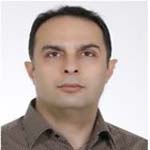Investigating Urban Heat Islands (UHI) and the irrelation with air pollution, NDVI and NDBI in Arak using RS techniques
With the development of urbanization, a large part of agricultural areas and forests have been replaced by residential areas, industrial centers, and other infrastructures. This is due to human life style and his endeavor to reach sustainable urbanization. A series of changes in the reflection of light from different material’s surface, heat storage and heat transfer, have changednatural and artificial landscape orsignificantly affected local climate. Therefore, public concerns about urban sprawl, increasing urban population and quality of urban environmental have motivated planners to seek better perspectives for development of urban areas. Increasing temperature of urban areas is considered to be one of the most important environmental problem in cities. This increasing temperature results in creation of Urban Heat Islands (UHI) in some parts of urban areas, which are significantly warmer than surrounding urban environment. Therefore,a new and successful method of urban planning should be introduced with respect to spatial distribution of land surface temperature (LST) to achieve better urbanization and reduce environmental impacts on cities.
The present study takes advantage of Landsat Thematic Mapper (TM)/Enhanced Thematic Mapper Plus (ETM+) thematic maps to investigate therelationship between air pollution, and two indexes of NDBI and NDVI with land surface temperature (LST) and Urban Heat Islands (UHI) in urban areas. Satellite imageries of Arak (an industrial city in Iran) has been chosen for the case study. Urban and natural areas and impermeable surfaces such as roads, buildings and other constructions are rapidly developing in this city. In the first step of research methodology, necessary pre-processing programs such as radiometric corrections were performed on the satellite imageries. Then satellite imageries were transformed toatmospheric images to produce NDBI and NDVI indexes. Finally,land surface temperature maps wereproduced using the method of Landsat Project Science Institute in Arc GIS 10.3. To classify satellite images, seven land use classes were identified as poor pastures, averagepastures, rich pastures, bare lands, Lake’s Shore, agricultural lands and residential lands.Then, training images classification method was used to collect samples from the study area and classification was performed using maximum likelihood method for monitoring. In order to analyze LST parameter using NDBI and NDVI indexes, air quality data,and statistical methods like Kolmogorov-Smirnov test, paired t test and Pearson correlation test were used. The results of Kolmogorov-Smirnov test indicated that data used in this study was normally distributed. The results of t test, temperature recorded by synoptic stations in Arak and remotely sensed data indicated that the accuracy of the test is more than 5%. Thus, the difference between residential land use and other urban land uses was not statistically significant. Moreover, results indicate that there is a more than 99 percent correlation between temperature recorded by the synoptic stations in Arak and data collected from satellite imageries. Results of correlation with remotely sensed data indicatedthatthere is a significant correlation between99 percent of results and less than 5 micron particles.
Correlation between air pollution data andremotely sensed data (LST) indicated that LST and less than 5.2 micronparticlesare significantly correlated with 99% accuracy. Urban heat island usually occurs in metropolitan area and its surroundings. Due to climate changes, urban heat islands are constantly developing. This results in increased energy consumption for air conditioning systems. Thus, reducing the effects of urban heat islands has become an important global issue. The present study has successfully explained the effects of urban heat islands and their environmental problems on normal life. Detailed program of related measures and policies should reduce the intensityof urban heat island. Final development of the cities should be based on land surface temperatures in surrounding areas in a way that cities can reach a lower surface temperature as compared to the temperature before urban development.
Following strategies are suggested for a more comprehensive consideration of urban green spaces in urban planning and future development of cities: Paying attention to architecturalcriteria and urban land use, and alsopaying attention to soil and water management parametersbased on the principles of green architecture, paying attention to standards of anthropogenic temperature rise caused by human activities, and the problem of urban heat islands. Moreover, it is crucially important to prepare the necessary situation for the community to reach a good physical and mental health.
- حق عضویت دریافتی صرف حمایت از نشریات عضو و نگهداری، تکمیل و توسعه مگیران میشود.
- پرداخت حق اشتراک و دانلود مقالات اجازه بازنشر آن در سایر رسانههای چاپی و دیجیتال را به کاربر نمیدهد.


